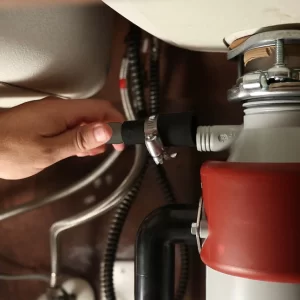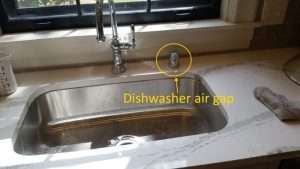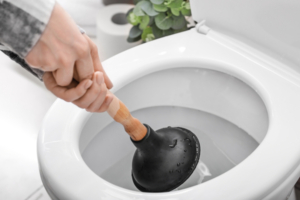How to Complete the Dishwasher Drain Hose Connection
This article is about how to complete the dishwasher drain hose connection so that your dishwasher can properly drain. This is important to keep dirty contaminated water from entering back into your dishwasher.
No worries, the dishwasher drain hose connection is not a difficult task to complete but there are different methods for installation to consider between having a garbage disposal or not.
We are going to assume you are going to complete the dishwasher drain hose connection for the first time. If you are replacing a dishwasher or the hose then you can just mock the current installation. Take plenty of photos before your disconnect the old dishwasher.
Assuming you are installing a dishwasher for the first time, you may need to install a drain fitting called a Y-branch tailpiece. This tailpiece will give the wastewater from the dishwasher a place to flow into your home’s drain system.
These are the variations of the connection:
- The drain hose is connected through an air gap to the garbage disposal
- The drain line is connected through an air gap directly to the drain
- The drain line is connected through a “high loop” to the garbage disposal
- The drain line is connected through a “high loop” directly to the drain
The air gap is the safety device that is installed on the sink or countertop near the sink through which the dishwasher hose passes on its way to the drain. This provides a pressure break in the drain line that prevents dirty drain water from being back-siphoned into the dishwasher.
Some dishwashers have another device known as a “high loop” installation. In those situations, the drain loops up under the sink cabinet to a point above the dishwasher’s water level to prevent backflow into the dishwasher.
In either installation, you will need to ensure you turn the water off and unplug the garbage disposal if needed before you start the installation.
Tools Needed:
- Screwdrivers
- Utility knife
Materials Needed:
- 7/8 drain hose
- Hose clamps
- Y-branch drain tailpiece
- Garbage disposal drain adapter(as needed)
- Pipe clamp or pipe strapping(as needed)
Instructions: How to Complete the Dishwasher Drain Hose Connection
Drain Hose Connection with Air Gap and Garbage Disposal
- Connect the hose to the air gap
- Connect the hose to the garbage disposal (no kinks in the hose)
Drain connection with Air Gap (But No Garbage Disposal)
1. Connect the dishwasher hose to the small side of the air gap.
2, Connect the hose to the drain pipe. use the larger side of the Y-branch tailpiece on the sink drain. Install a tailpiece if your drain system doesn’t have one already.
Here is a video showing the dishwasher drain hose connection for the high loop application.
Drain Hose Connection Using High Loop to Garbage Disposal
In some areas of the US the local building codes specifies whether to use a high loop vs an air gap. In Pembroke Pines, FL the local code allows for the high loop application but in Minnesota, the local code calls for the air gap installation.
1. Pull as much of the hose as you will need for the dishwasher to make the high loop.
2. Loop the drain hose
3. Connect the hose
Drain Connection Using High Loop Directly to the Drain
1. Loop the drain hose, same as before pulling as much of the hose from the dishwasher as needed to create the loop
2. Attach the hose to the sink drain
Here is a video showing the dishwasher drain hose connection for a high-loop application.
Check out our article “Dishwasher High Loop Keeps Your Water Safe”. For additional questions or comments, be sure to comment. GGR Home Inspections conducts home inspections in the Broward, Palm Beach, and Miami Dade county areas.






